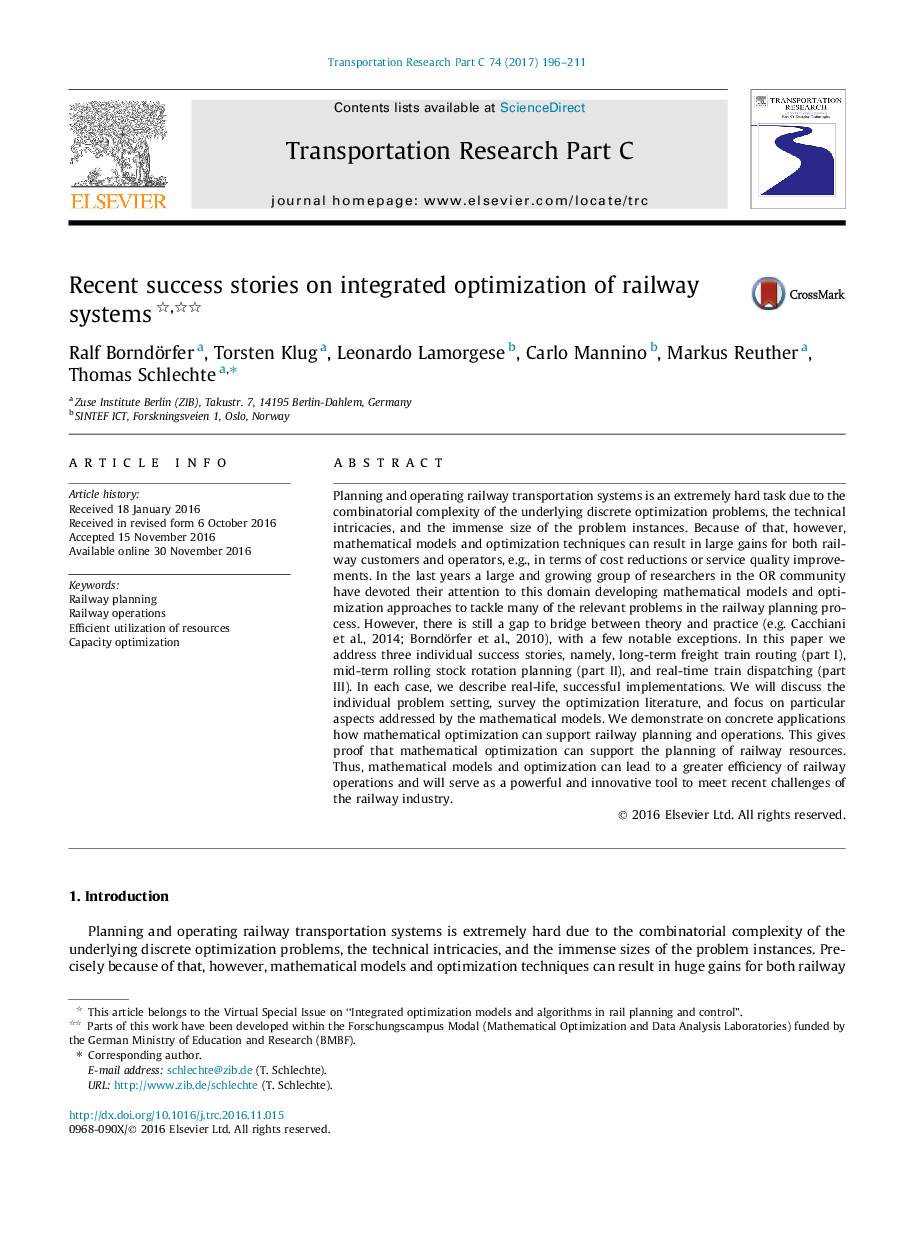| Article ID | Journal | Published Year | Pages | File Type |
|---|---|---|---|---|
| 4968587 | Transportation Research Part C: Emerging Technologies | 2017 | 16 Pages |
â¢A comprehensive description of the planning process in the railway industry.â¢Three success stories on real-world implementations of OR techniques.â¢An effective linearization approach for a non-linear freight train routing model.â¢A case study on the price of regularity for rolling stock rotations.â¢A real time train dispatching system based on Benders decomposition.
Planning and operating railway transportation systems is an extremely hard task due to the combinatorial complexity of the underlying discrete optimization problems, the technical intricacies, and the immense size of the problem instances. Because of that, however, mathematical models and optimization techniques can result in large gains for both railway customers and operators, e.g., in terms of cost reductions or service quality improvements. In the last years a large and growing group of researchers in the OR community have devoted their attention to this domain developing mathematical models and optimization approaches to tackle many of the relevant problems in the railway planning process. However, there is still a gap to bridge between theory and practice (e.g. Cacchiani et al., 2014; Borndörfer et al., 2010), with a few notable exceptions. In this paper we address three individual success stories, namely, long-term freight train routing (part I), mid-term rolling stock rotation planning (part II), and real-time train dispatching (part III). In each case, we describe real-life, successful implementations. We will discuss the individual problem setting, survey the optimization literature, and focus on particular aspects addressed by the mathematical models. We demonstrate on concrete applications how mathematical optimization can support railway planning and operations. This gives proof that mathematical optimization can support the planning of railway resources. Thus, mathematical models and optimization can lead to a greater efficiency of railway operations and will serve as a powerful and innovative tool to meet recent challenges of the railway industry.
